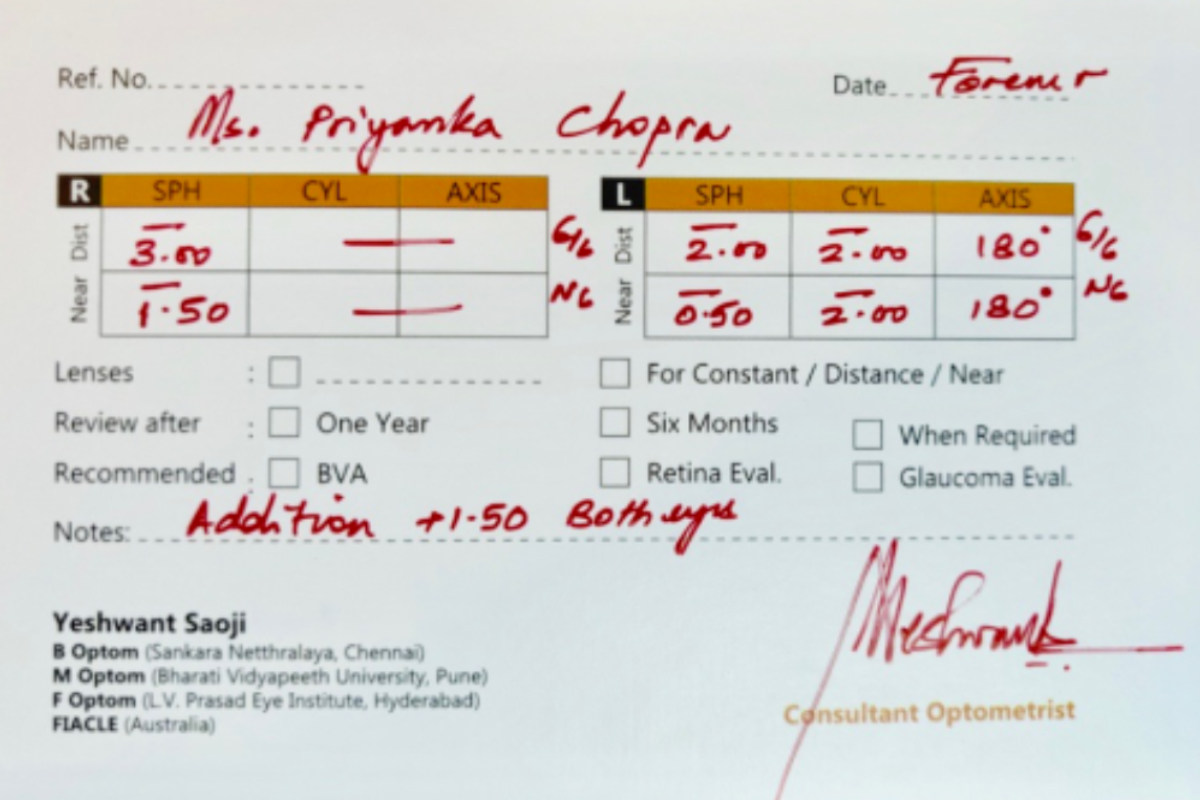Understanding of the spectacle prescription is it difficult?
What is a cylindrical number and why do I have an axis? Can I wear contact lenses for such a number? These are common question at any eye clinic, because not many are aware of reading the spectacle prescription correctly. It’s actually easy if you understand few variables.
Lets read the spectacle prescription correctly
If you read the prescription carefully, it has 3 headings
Sph (Spherical) – This denotes the power needed to correct all the meridians of the eye. It can be Plus or Minus power. Priyanka needs a – 3.00 Diopters Sph. in all meridians of her right eye.
Cyl (Cylindrical) – This is a number needed over and above the spherical power to correct a particular meridian. In left eyes she needs a -2.00 Diopters spherical with – 2.00 Cyl at axis 180. This means at axis 180 her power is – 4.00 but at axis 90 she needs – 2.00 Diopters.
Axis – This denotes the axis at which the cylindrical power has to be added and is not Power. Many people feel bad that they have cylindrical power as well as axis. When cylindrical power is present axis will be there.
Near power = distance power + addition
Let us consider our Priyanka to be 45 year old lady and her was prescribed +1.50 Diopters addition. Which means for near she would need – 1.50 in right eye and –0.5 Diopters Spherical with – 2.00 cyl Axis 180
The distance vision
You will find eye sight or vision written as – 6/6 This means Priyanka is reading given letters at 6 meters, which a normal person reads at 6 meters. Hence 6/6 is normal eyesight. If it is 6/12, a normal person can read these letters at 12 meters but Priyanka has to come close at 6 meters to read them, thus the eyesight is below normal.
The near vision
N6 is the normal vision for near, any higher number than 6 indicates below normal near sight.
Easy, isn’t it?
Hope this will help you to read the spectacle prescription, which in fact will help you to read better.

